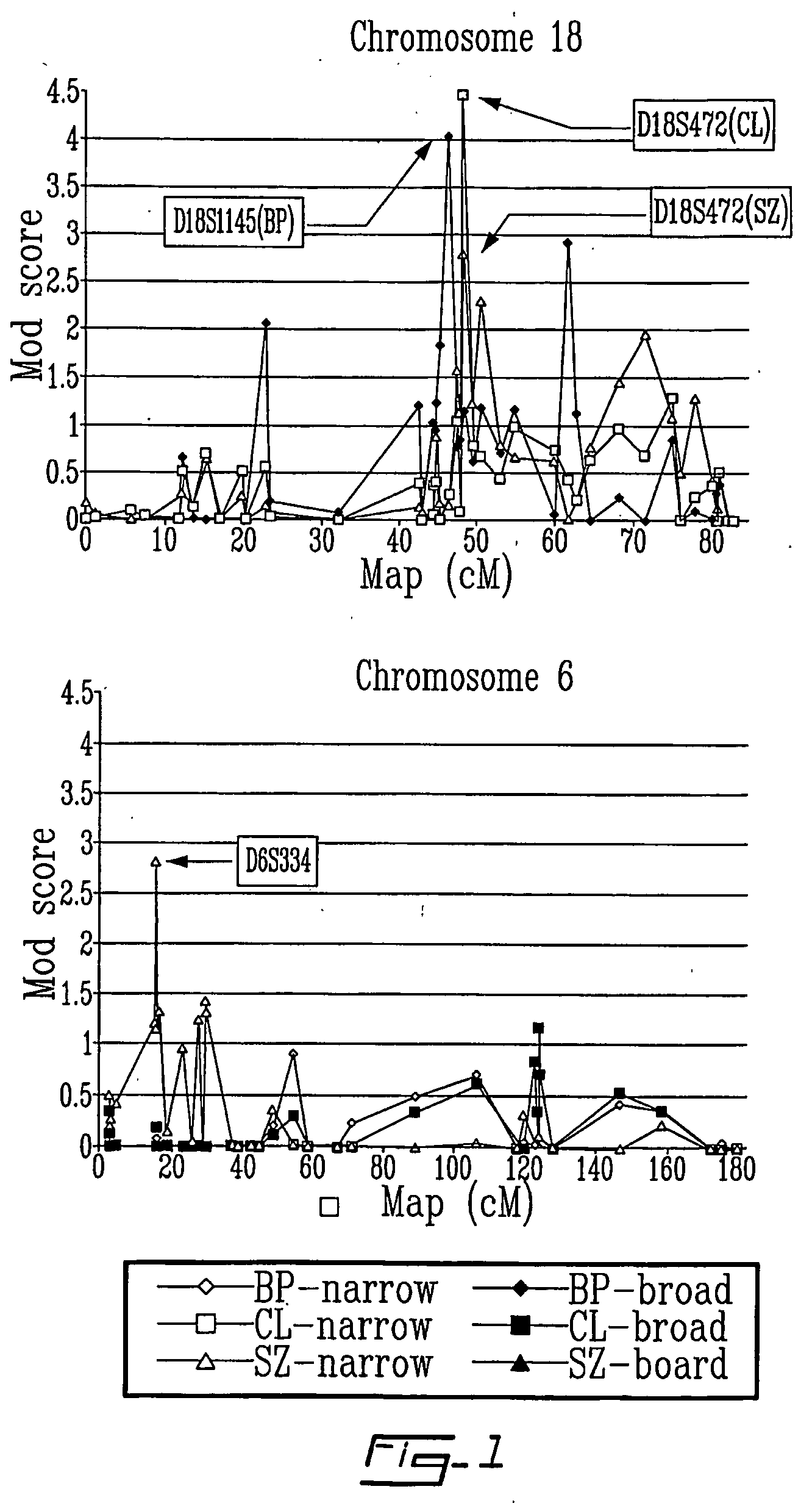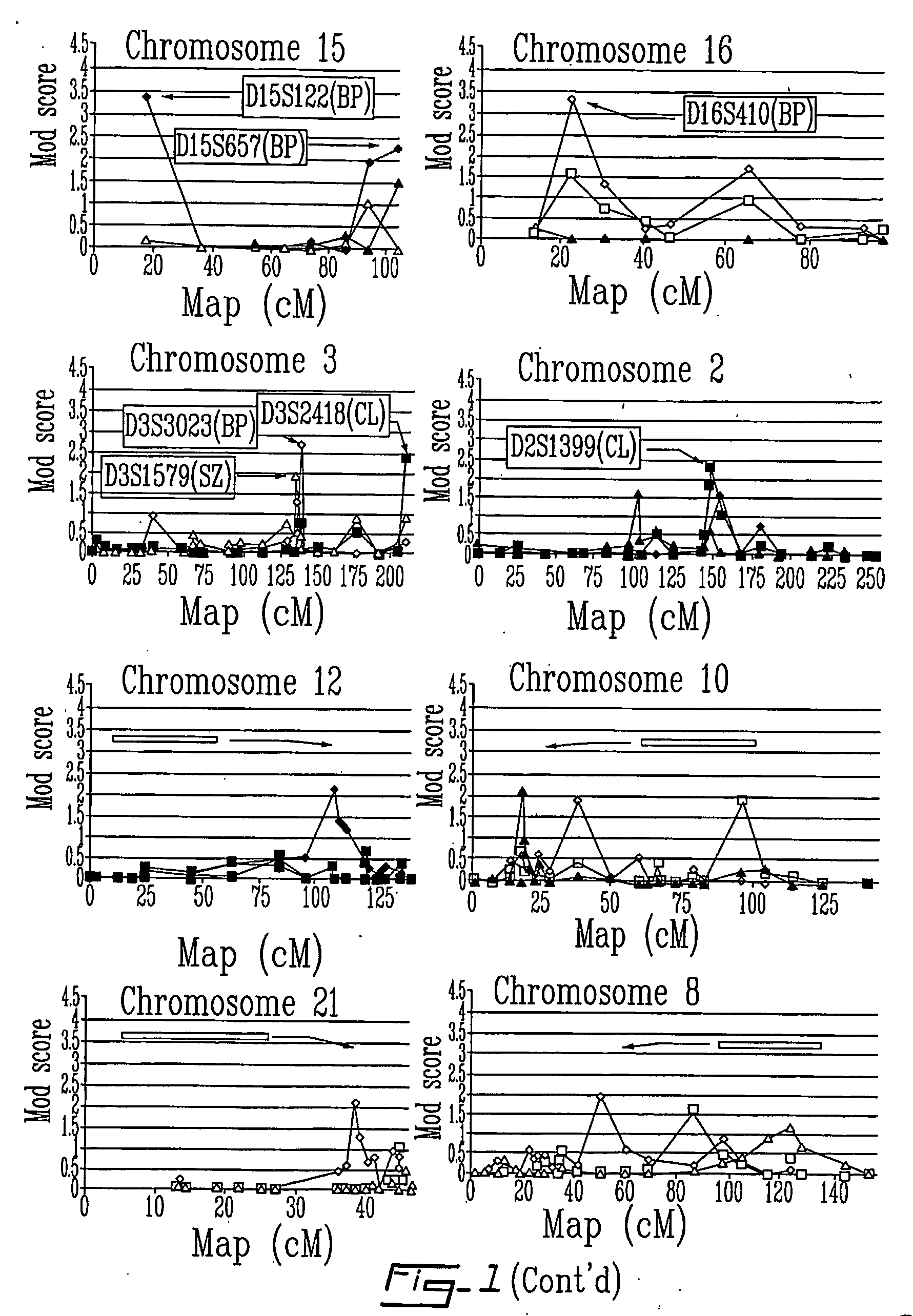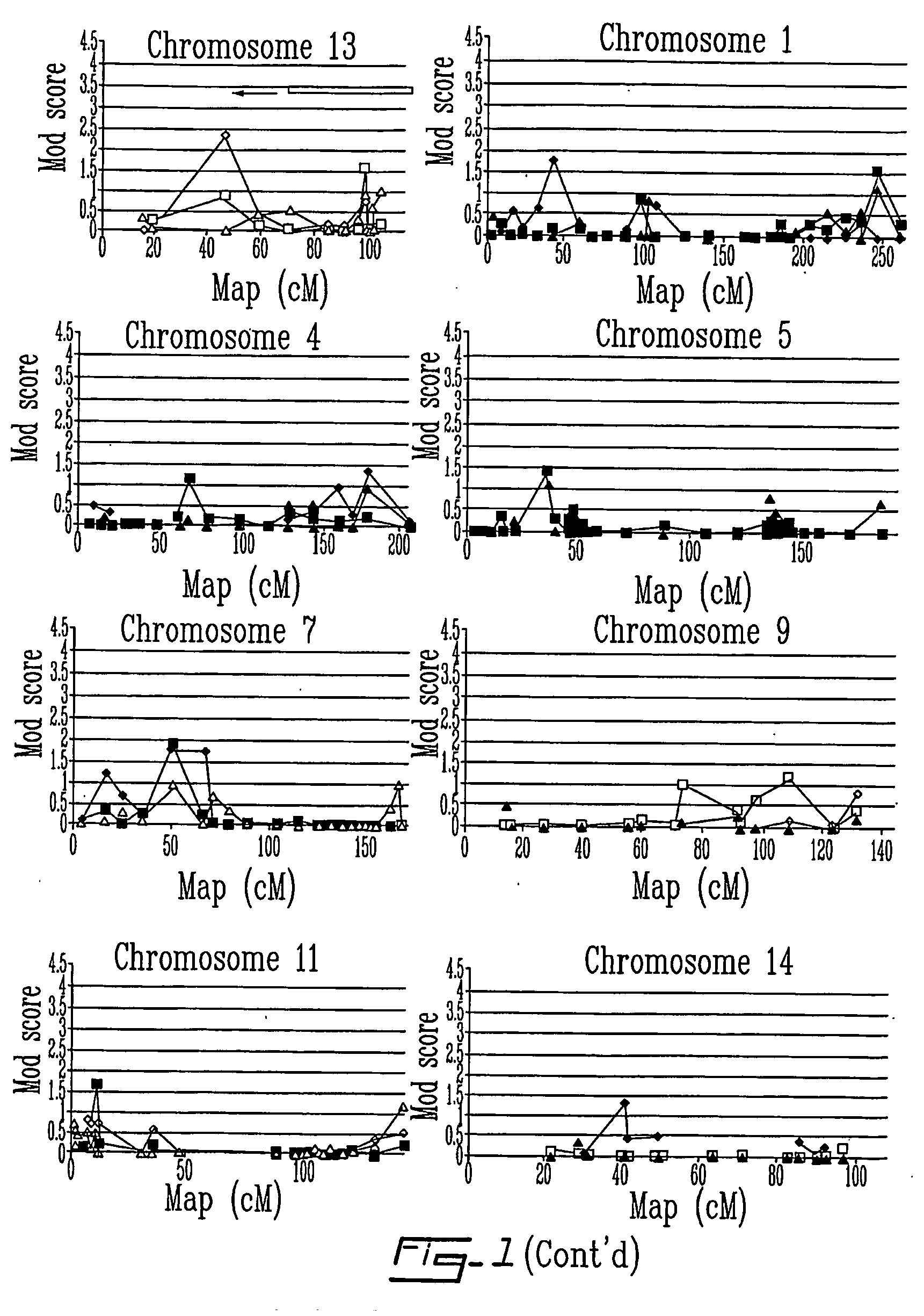Method for determining susceptibility to schizophrenia
a genetic susceptibility and disease technology, applied in the field of diagnosis of the genetic susceptibility of a patient to schizophrenia, can solve the problems of hampered progress in the search for sz genes, no reliable biological markers for the disease, and inability to locate and manipulate, when needed, traits determined by more than one gene, etc., to achieve the effect of high level of heritability
- Summary
- Abstract
- Description
- Claims
- Application Information
AI Technical Summary
Benefits of technology
Problems solved by technology
Method used
Image
Examples
example i
Linkage results in sample 1.
[0043] Genome scan in sample 1 was completed, comprising 480 markers (i.e., 350 markers in a 10 cM resolution map plus 130 additional markers to follow up positive results). FIG. 1 now shows the results of the full genome scan. This genome scan yielded several linkage signals that were classified as being either significant, suggestive or confirmatory according to conservative thresholds derived by increasing the criteria by 0.70 to correct for multiple testing. Hence, the adjusted lod score criteria were 4.0 for a genome wide significant linkage, 2.6 for a suggestive and 1.9 for a confirmatory linkage (i.e. a region where significant linkage was shown such as in 6p22.3 for SZ). Table 3 lists the 7 results where a lod score met at least the suggestive level of significance. Among these 7 loci, two met the criterion for “genome wide” significance: a lod score of 4.46 was found at D18S472 (18q21.1) with the common locus (CL) phenotype, and a lod score of 4...
example ii
The Patient Population and its Characteristics
[0048] The population of Canada, especially Eastern Quebec, has unique assets for genetic studies based on 1) the geographic stability; 2) a universal health care system allowing for easier sampling and ascertainment; 3) an easy access to intact church baptism and marriage registers since the 17th century; 4) a large sibships in older generations. Hence, increasing sample size, as it was done, a major objective allowed to take full advantage of these unique characteristics.
[0049] The screening procedure of the field organization has been established since the early nineties. The pedigrees were ascertained through screening of the medical archives or through direct referral from clinicians from the clinical psychiatry departments in metropolitan Québec and surrounding regions of Eastern Québec The ascertainment procedure was approved by the medical directors and by the ethics committee.
[0050] Ascertainment was conducted in 3 regions: B...
example iii
The Molecular Methods Used in This Study
[0055] All the methodologies required for cell immortalization and genotyping s are well established according to Maziade et al., (Maziade et al., 2001b, Mol. Psy. 6(6) 684-93). The cell immortalization success rate is over 95%, and the lymphoblastoid bank for SZstudies has around 1,200 cell lines (N=980 family members of SZ and BP kindred's; N=97 normal controls; N=115 unrelated SZ pro-bands).
Genotyping: Microsatellites
[0056] The DNA polymorphisms used are highly informative di-, tri-, and tetranucleotide microsatellite repeats for which PCR primers are synthesized (Alpha DNA, Montreal) after adding a M13 tail to the forward primer. A semi-automated high-throughput genotyping procedure using laser infrared automatic DNA sequencers, and automated genotyping software (SAGA) from LICO™ was used. The PCR amplification of microsatellites is routinely performed and well known in the art. For microsatellites and SNPs, genotypes are called automa...
PUM
| Property | Measurement | Unit |
|---|---|---|
| frequency | aaaaa | aaaaa |
| personality disorder | aaaaa | aaaaa |
| time | aaaaa | aaaaa |
Abstract
Description
Claims
Application Information
 Login to View More
Login to View More - R&D
- Intellectual Property
- Life Sciences
- Materials
- Tech Scout
- Unparalleled Data Quality
- Higher Quality Content
- 60% Fewer Hallucinations
Browse by: Latest US Patents, China's latest patents, Technical Efficacy Thesaurus, Application Domain, Technology Topic, Popular Technical Reports.
© 2025 PatSnap. All rights reserved.Legal|Privacy policy|Modern Slavery Act Transparency Statement|Sitemap|About US| Contact US: help@patsnap.com



